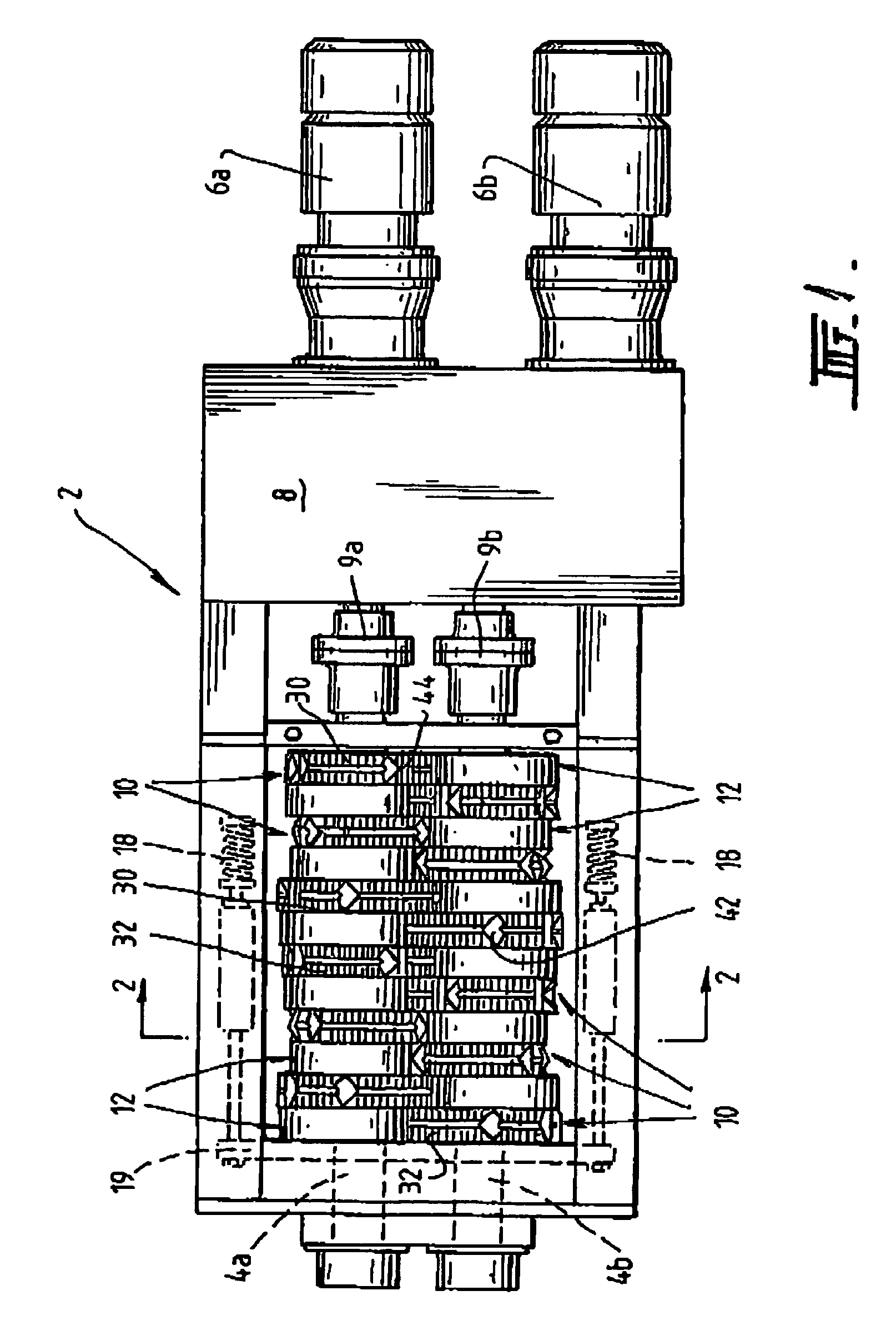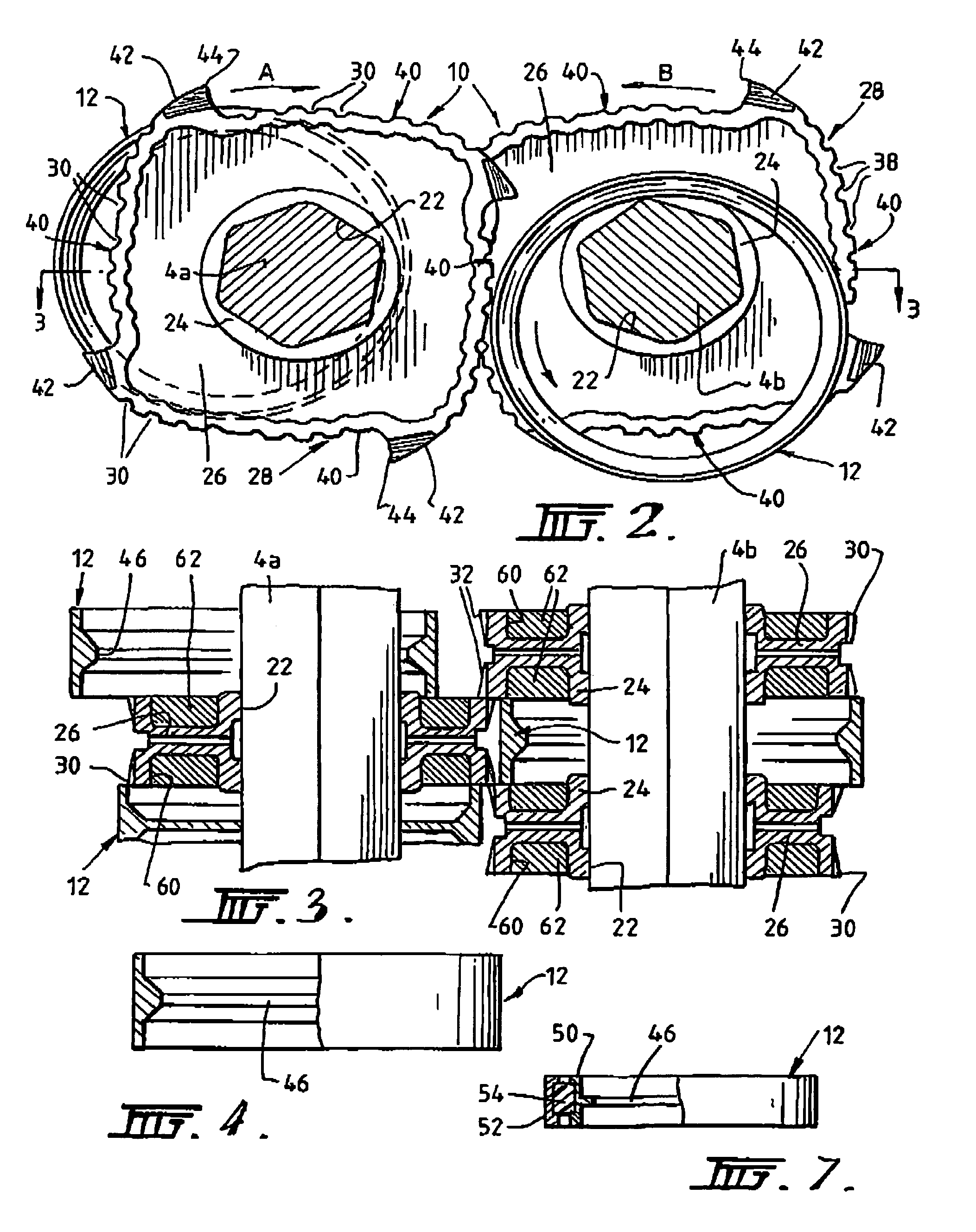Self cleaning shredding device having movable cleaning rings
a shredding device and self-cleaning technology, which is applied in the field of machines, devices or installations, can solve the problems of reducing the efficiency of cutting machinery, even stalling machinery, and attempts to provide mechanisms or means to prevent material wrapping around cutters, and achieve the effect of reducing the noise of impact or against cutters
- Summary
- Abstract
- Description
- Claims
- Application Information
AI Technical Summary
Benefits of technology
Problems solved by technology
Method used
Image
Examples
Embodiment Construction
[0041]In FIG. 1 there is shown one form of a shredder or shredding machine, generally denoted as 2, suitable for shredding used motor vehicle tires. Briefly, shredder 2 includes a pair of driven counter-rotating spaced apart shafts 4a,4b arranged in substantially parallel relationship to each other. Shafts 4a,4b are driven by suitable motors 6a,6b arranged in substantial parallel relationship through a suitable transmission 8, such as electric or hydraulic motors and mechanical gearboxes. Couplings 9a, 9b join shafts 4a, 4b to gearbox / transmission 8.
[0042]A plurality of rotary cutters 10 are located on one of the shafts 4a arranged alternately with a plurality of spacer rings 12 to form an alternating sequence of cutters 10 and spacers 12 in a row on this shaft. A second shaft 4b is also provided with a plurality of cutters 10 and spacers 12 alternately arranged thereon to also form an alternating sequence of cutters and spacers in a row. The cutters 10 on one shaft 4a are arranged ...
PUM
 Login to View More
Login to View More Abstract
Description
Claims
Application Information
 Login to View More
Login to View More - R&D
- Intellectual Property
- Life Sciences
- Materials
- Tech Scout
- Unparalleled Data Quality
- Higher Quality Content
- 60% Fewer Hallucinations
Browse by: Latest US Patents, China's latest patents, Technical Efficacy Thesaurus, Application Domain, Technology Topic, Popular Technical Reports.
© 2025 PatSnap. All rights reserved.Legal|Privacy policy|Modern Slavery Act Transparency Statement|Sitemap|About US| Contact US: help@patsnap.com



